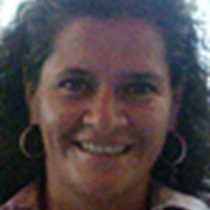The beach at Punta Pitt this morning is made out of olivine, and the green sand is incredibly soft, the result of eroded particles of the hardest crystals and minerals that make a lava flow. The little beach transported us to an enchanted kingdom, which felt completely surreal; the glittered sparkles of crystal seemed to be the result of a fairy flying around here. At the end of the trail, a small colony of red-footed boobies surprised us, birds facing the difficult conditions of the season while patiently taking care of the single chick on their nests. Perching by itself on a solitary branch, we found one fully grown adult with red feet that seemed to be posing, waiting to be photographed.
San Cristobal one of the very old islands of the Galapagos group, where places like Punta Pitt are quite common—these formations are made out of volcanic ash or tuff. As we walked up throughout the canyon, we were amazed at these magnificent formations that had formed because of one volcanic event. The meeting of the hot boiling lava with the cold temperatures of the ocean produce steam that eventually compacts upwards, making layers and layers of material that would eventually erode and create the sand of the nearby beaches.
The white coralline beach and the sea lions said good-bye to us in the most relaxing and beautiful way possible. Cerro Brujo in the afternoon was just the best way to end our voyage in this incredibly interesting islands.
We have had an incredible week on board the National Geographic Endeavour II. The living laboratory of evolution has taught us that we can share a habitat with all kinds of creatures. We go home having witnessed firsthand why humans need to preserve places like this, not only for us humans to learn but for all the magnificent creatures that live here.







